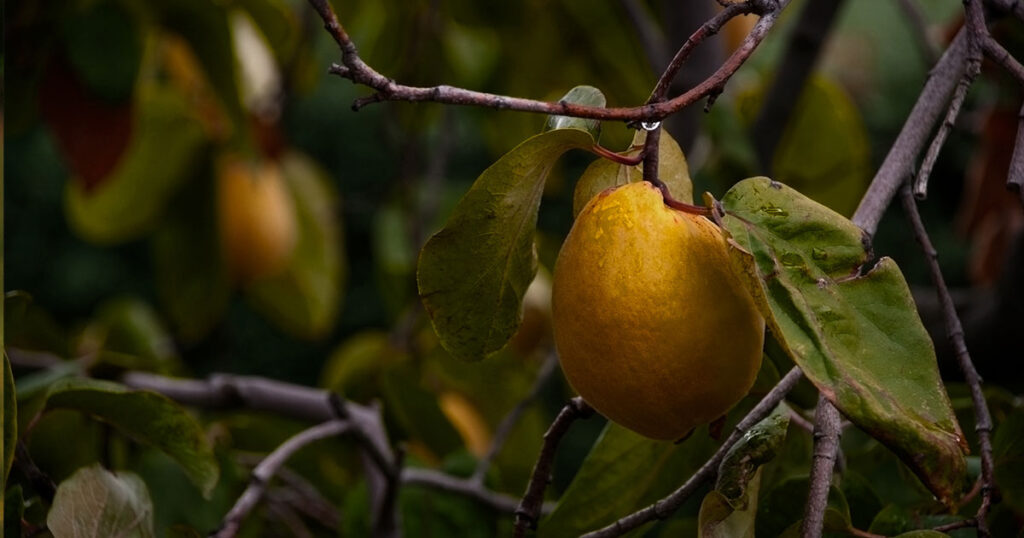
When I returned to Spain at the end of September, after a month in the States, the weather was typical of the fall season that had just begun, with cool mornings and evenings pleasant but no longer right for T-shirts. But a few days later the thermometer shot up, and talk was of the veranillo, “little summer,” a period of unseasonably mild fall weather at the end of September, like an Indian summer. This was the veranillo de San Miguel, named for the saint whose name day on September 29 coincides with that warm spell. “Nice weather! Enjoy it while it lasts,” was the essence of several exchanges with my neighbors. Compared to the dry heat of New Mexico, though, the weather in my area of Asturias seemed more sticky than anything else.
This period of especially warm weather in the early fall is also called the veranillo del membrillo, named for the quince fruit, which ripens around then. I had never tasted or even seen a quince before coming to Spain, but a tree grew in my yard, and once I discovered the fruit’s acidic tartness, I was a fan. I gathered up the fruit in the fall. A quince is a hard, yellow, pear-shaped fruit, nearly impossible to eat without cooking. It’s hard to sink your teeth into one, but it’s also hard to slice it, as I learned when I tried to cut the fruit up for cooking and had to switch my knife for a cleaver. In Spain, quince is served as dulce, a concoction of sugar and fruit cooked down and then spooned into a mold. After it sets, it can be cut into pieces and is typically served with cheese. It keeps for a long time in the fridge and even longer in the freezer.
The second Indian summer, the truer one because it comes after the first killing frost, is in mid-November and coincides with butchering time. It is called the veranillo de San Martín, for the saint Martín de Tours, whose name day is November 11. Legend has it that in the year 337, when Martín was a soldier in the Roman calvary, he pulled his sword and cut his cloak in two to share it with a beggar he saw freezing on the street. In kindly recognition of the act, God warmed the weather for a few days.
A quien madruga, Dios le ayuda, meaning God helps whoever gets up early, is the Spanish version of the English refrain “God helps those who help themselves.” But if God warmed the weather more consistently, it would be easier to crawl from bed on cold days, though by now we all know the unhappy consequences of warmer weather. Consequences shouldn’t surprise us: consequences exist for everything, including just being. As another Spanish refrain has it, A todo cerdo le llega su San Martín, meaning that every pig gets its day of reckoning. Help lasts a few days, but punishment is forever.

